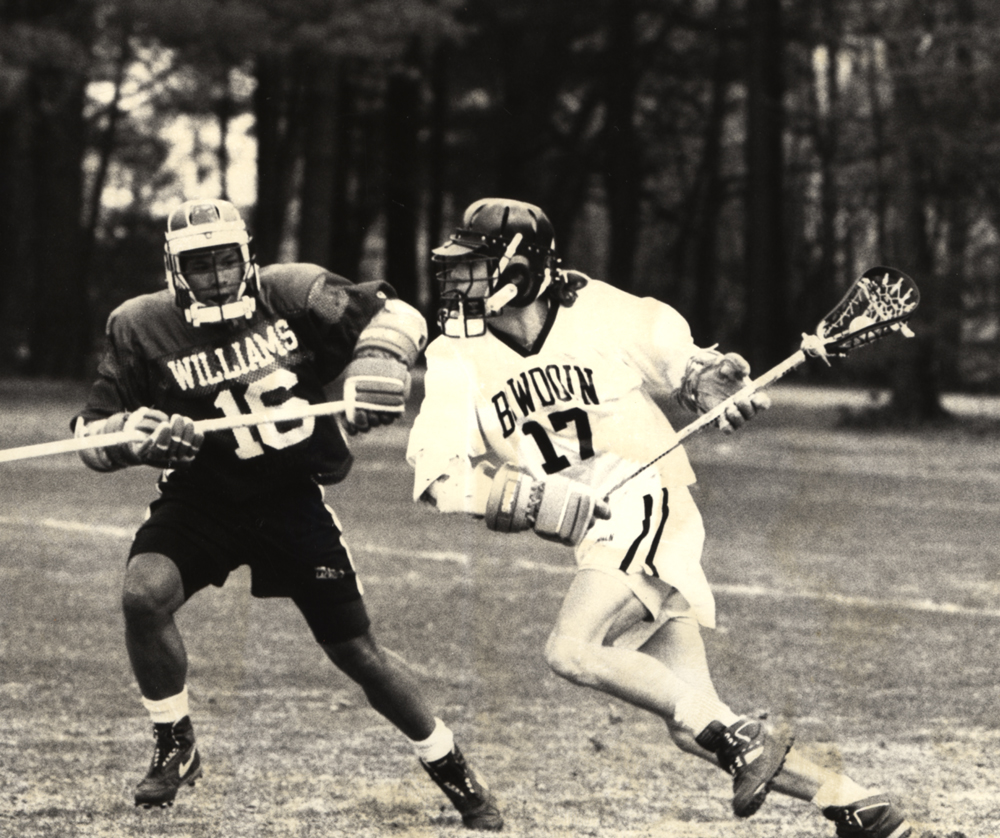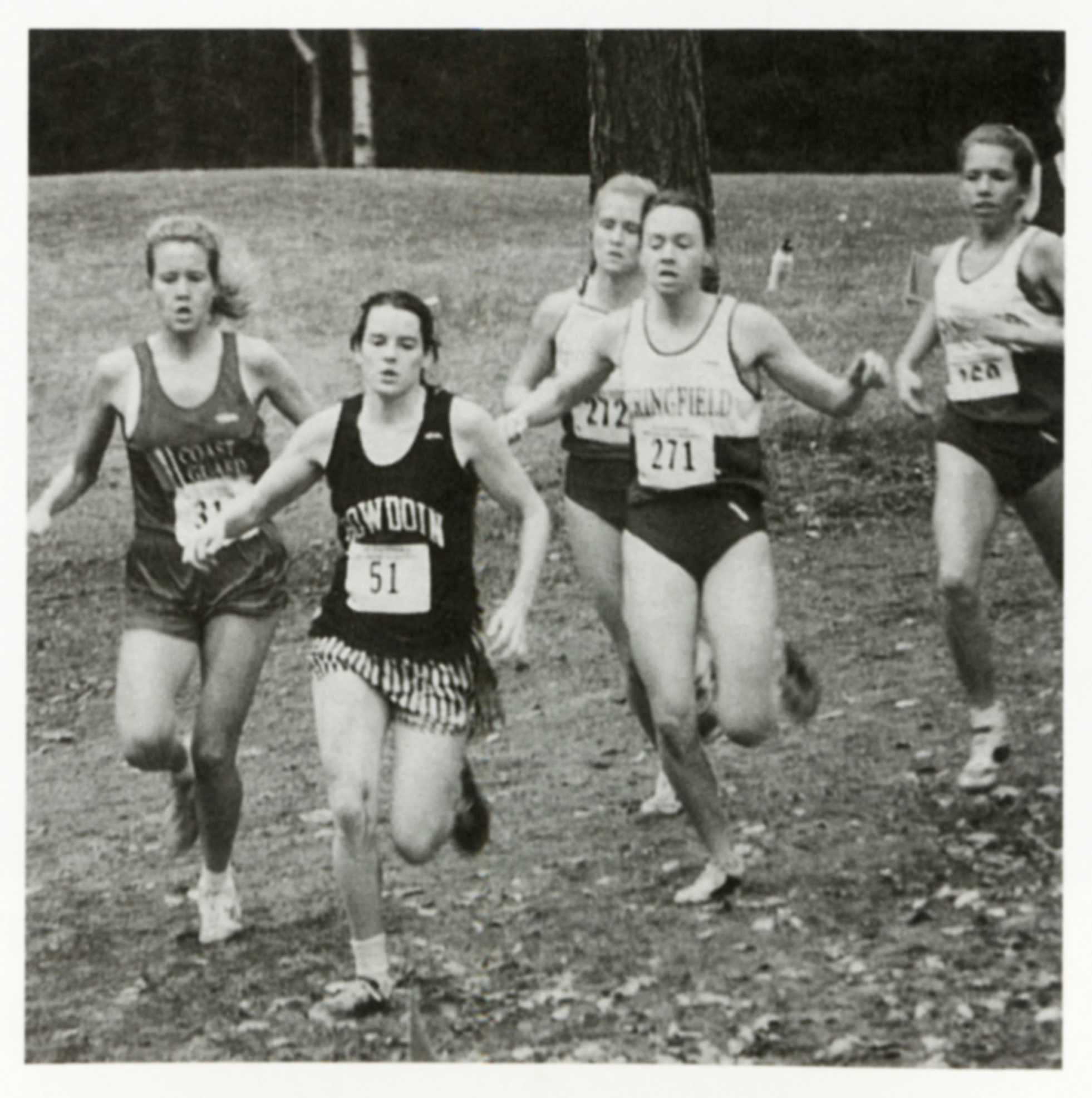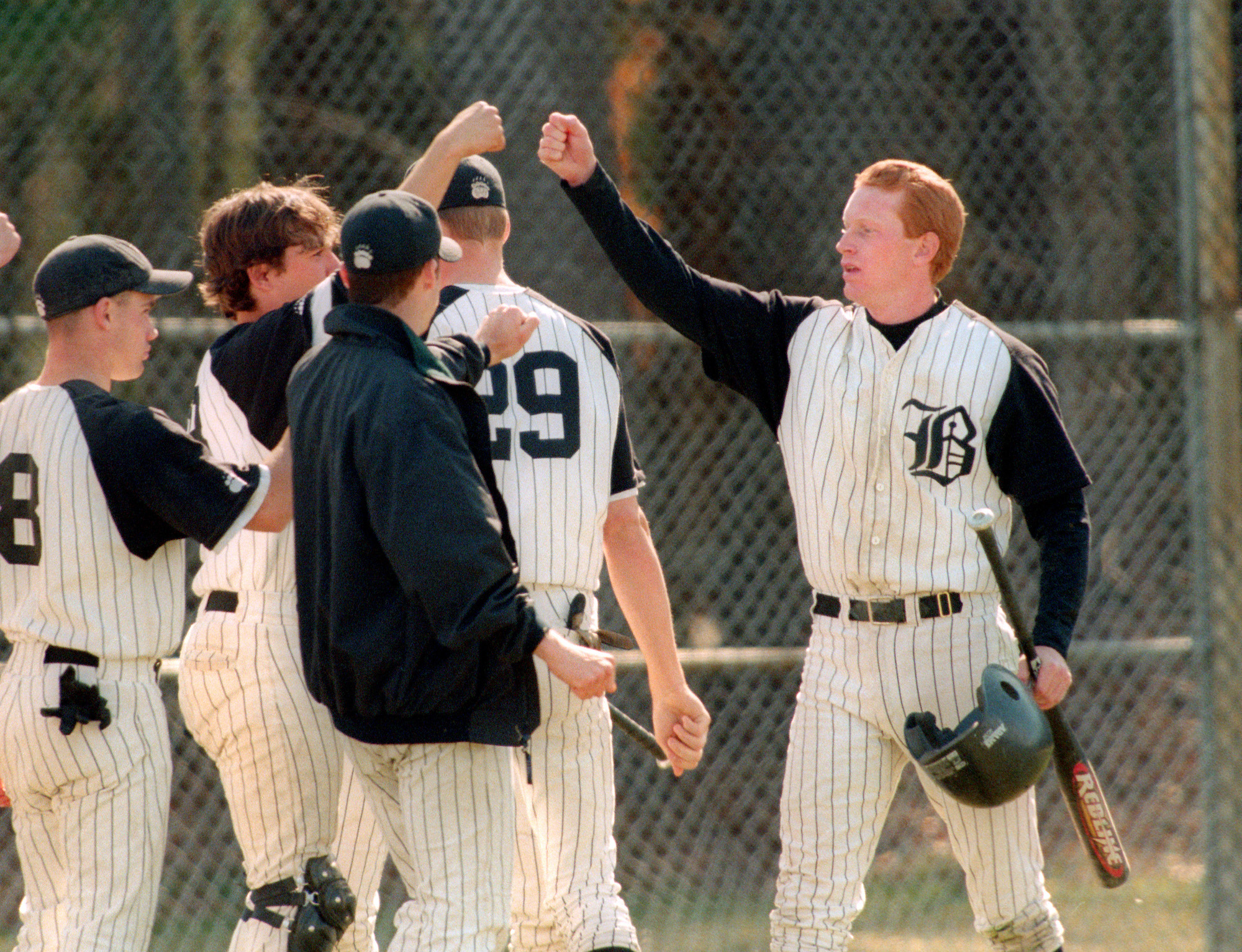As a result of low funds, the athletic department struggled with a lack of equity in the 1990s
April 15, 2021
 Courtesy of Bowdoin Special Collections and Archives
Courtesy of Bowdoin Special Collections and ArchivesBowdoin athletics kicked off the decade with a bang. On September 28, 1990, “Football edges Middlebury” appeared in big bold letters in the Orient after a recent nail-biting win. The cross country team was declared to be “one of the best in New England.” Men’s and women’s rugby were growing sports, field hockey had their first win and volleyball finished third in the NESCAC tournament.
One of the most popular sports of the 1990s was men’s ice hockey.
“In the 1990s we had enormous hockey crowds because the team was very popular in the local community, and the rink was right behind Smith Union where the Arctic Museum is being built. The cheering could be heard in the dorms, so students would run over to watch the games,” Head Coach of men’s track and field Peter Slovenski wrote in an email to the Orient.
Volleyball also beat Boston University during the Polar Bear Invitational, a competition Bowdoin hosted that consisted of local match ups between large universities and small colleges when NCAA leagues were not as strictly defined as they are today. Moreover, despite the divisions being established in the 1970s, Bowdoin was, for a period, not allowed to join national tournaments.
“My first year we were not eligible to be in the NCAA tournament, but then by my second year the NESCAC allowed all teams to be eligible for the tournament,” Krista Sarhbeck ’97, a former captain of the women’s soccer team, said in a phone interview with the Orient.
 Courtesy of Bowdoin Special Collections and Archives
Courtesy of Bowdoin Special Collections and ArchivesMiddlebury and Colby were the top rivals for the Polar Bears during the 1990s, but Bowdoin got the better of Colby in women’s soccer, carrying a long-term winning streak over the Mules for most of the 1990s.
“As a captain, your singular charge was to not lose to Colby,” Sahrbeck said. “You didn’t want to be the first team to break the winning streak.”
Student athletes 30 years ago felt they were considered a dominant social force on campus, contributing to a division between athletes and non-athletes. Greek life, despite the eradication in the 1990s, was still a staple on campus for most of the decade and played a vital role in shaping the divisive social culture.
“[It] was still the era of fraternities, and they ended the greek life when I was a senior,” Sahrbeck said. “The frats were made up of multiple sports. For example, there was a swimming, squash and tennis house, so I would stop by after practice and meet my friends and then their friends.”
Slovenski echoed this sentiment.
 Courtesy of Brian Beard
Courtesy of Brian BeardWithin athletics, inclusion was also an issue, as there were very few student-athletes of color and few female coaches.
“In the time I was playing in the NESCAC conference, there were fewer than 10 female athletes of color in the whole conference, and definitely no coaches of color,” Sahrbeck said. “It was [also] rare to see female coaches.”
Despite having the same number of men’s and women’s teams, these problems of inequity also impacted the way the athletic department distributed resources to teams, as the department struggled with budget cuts and freezes.
“Funding for athletics was frozen a lot during the 1990s,” Slovenski wrote. “Bowdoin was working hard to improve academic resources, and a lot of other departments also had frozen budgets.”
The dearth of funding hindered access to specialized fields for some women’s teams. While many varsity and club teams had their own space to train on and call their own, women’s soccer did not.
“One thing I was extremely disappointed in was that women’s soccer did not have its own field, but the men’s soccer team did, especially [with women’s soccer] being one of the more successful fall teams,” Sahrbeck said. “Our field was the left outfield by the baseball [diamond].”
The financial position of Bowdoin and the athletic program has strengthened exponentially since the 1990s. According to the Bowdoin College Reports, the 1990 Bowdoin College endowment was just shy of $143 million. However, the College’s endowment has since grown to $1.8 billion.
Despite not having strong financial support, there was unwavering support from parents and local Brunswick residents, both of whom were almost always in attendance at games. Just like today, their presence helped teams maintain strong seasons during the 1990s.

Comments
Before submitting a comment, please review our comment policy. Some key points from the policy: